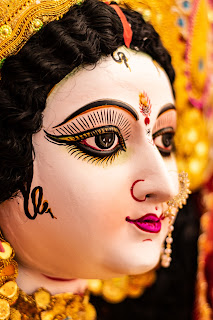The Bengali version of Lakshmi Puja: 2022
Just a day has passed since Goddess Durga left for Kailash carrying three of her four children. Lakshmi, her fourth child, has stayed behind to observe the Kojagari Lakshmi Puja, which will be celebrated on Wednesday in great splendor in every Hindu household. The day that Lakshmi Puja is observed is known as "Sharad Purnima."
This year, the immersion of the Durga idols took place on October 5th. Immediately following that, Bengali families began making Kojagari Lakshmi Puja preparations in the market and their houses in anticipation of hosting the Goddess of Wealth. On the final full moon day of the month of Ashwin, also known in Bengal, Assam, and Odisha as Kojagari Purnima.
This year, Sharad Purnima, also known as Kojagari Lakshmi Puja, begins on October 9th and lasts through October 10th. Hindu mythology holds that worshipping Maa Lakshmi on this day produces a flawless human personality since the moon rises with 16 Kalas, which define human individuality, on that day. Additionally, it is thought that keeping fast and doing the rites on this day will bring the family a wave of joy, health, money, and prosperity.
According to the Drik Pancahng, Sharad Purnima, this year begins at 3:41 AM on October 9th and lasts until 2:24 AM on October 10th. Sharad Purnima is observed in various ways around the nation, with residents in the country's east worshipping the goddess Lakshmi. In other regions of the nation, unmarried girls worship and fast on this day to appease Lord Shiva and ask for their ideal life partner.
Sharad Purnima is known as Sharad Poonam in Gujrat; however, Brij celebrates this day as Raas Purnima because they think Lord Krishna performed Maha Raas on this day.
The Kojagori Lakshmi puja is performed primarily in homes, while it can also be done in pandals. However, it is not carried out on the same massive scale as Durga puja.
A beautiful and hospitable goddess, Lakshmi. Although the notion of an ideal girl may have altered nowadays, Bengalis still refer to the ideal girl as a "Lakkhi meye," which means "as good a girl as Lakshmi," who pays attention to her elders, is modest and is effective in domestic tasks. Without further ado, let's discuss Lakshmi puja and its rituals.
Fasting for Kojagori Lakshmi puja is rigorous since one is not allowed to drink anything other than water until after dark, even though people now often drink tea because they are addicted to it. Every household has its own unique rituals. The lady of the house often does it, although occasionally, priests are also called. Most women drape in the traditional Laal Paad Saree or follow the colour code of yellow. They layer themselves with gold chains and offer prayers to the goddess.
One of the primary elements of the kojagori Lakshmi puja is "Alpana." The rice paste is used to create intricate patterns in front of the deity, which takes a lot of finesse. Drawings of the goddess's solely internal footprints are made. Since no imprints are leaving the house, Lakshmi ought to remain there. In addition, candles and incense sticks are lit.
Fresh water is added to a "ghot" that has a limb of a mango tree in it after all the sheets have been changed. The goddess is then presented with an abundance of fruits and sweets, which must include coconut nadus, puffed rice sweets, etc., and are prepared with the utmost sanctity in utensils kept separate for this reason.
The "pachali" is read after all the preparations have been made, and "Anjali" (flower ovation) is given. I had been reading the Kojagori Lakshmi puja "pachali" at my mother's place for the past few years. It describes the life of a well-known businessman in Delhi who had a smart son. The king told the businessman's son to make a wish because he was so proud of him. The boy enquired of his mother what he ought to want. The mother advised the monarch to issue a decree prohibiting lighting in any other home on the night of the Kojagori Lakshmi Puja.
Since the goddess prefers the sound of conch shells over all others, the puja is concluded by blowing a conch shell.
This is how West Bengali people observe the kojagori Lakshmi puja.
May Goddess Lakshmi bestow upon us all her blessings of prosperity and joy!




Comments
Post a Comment